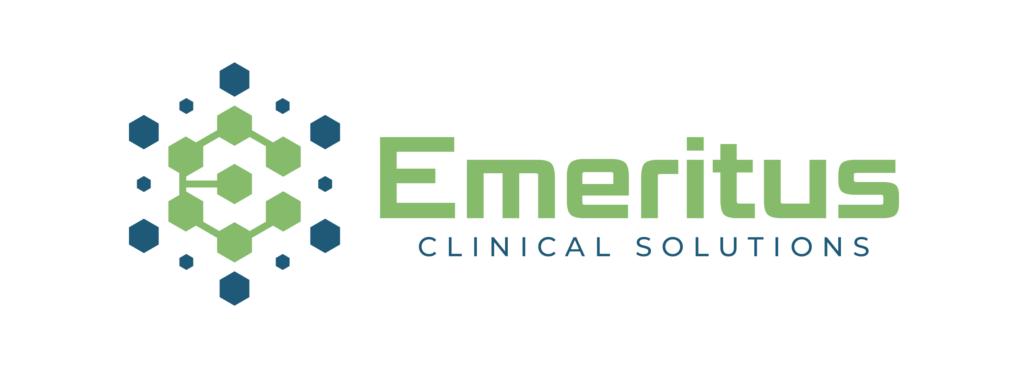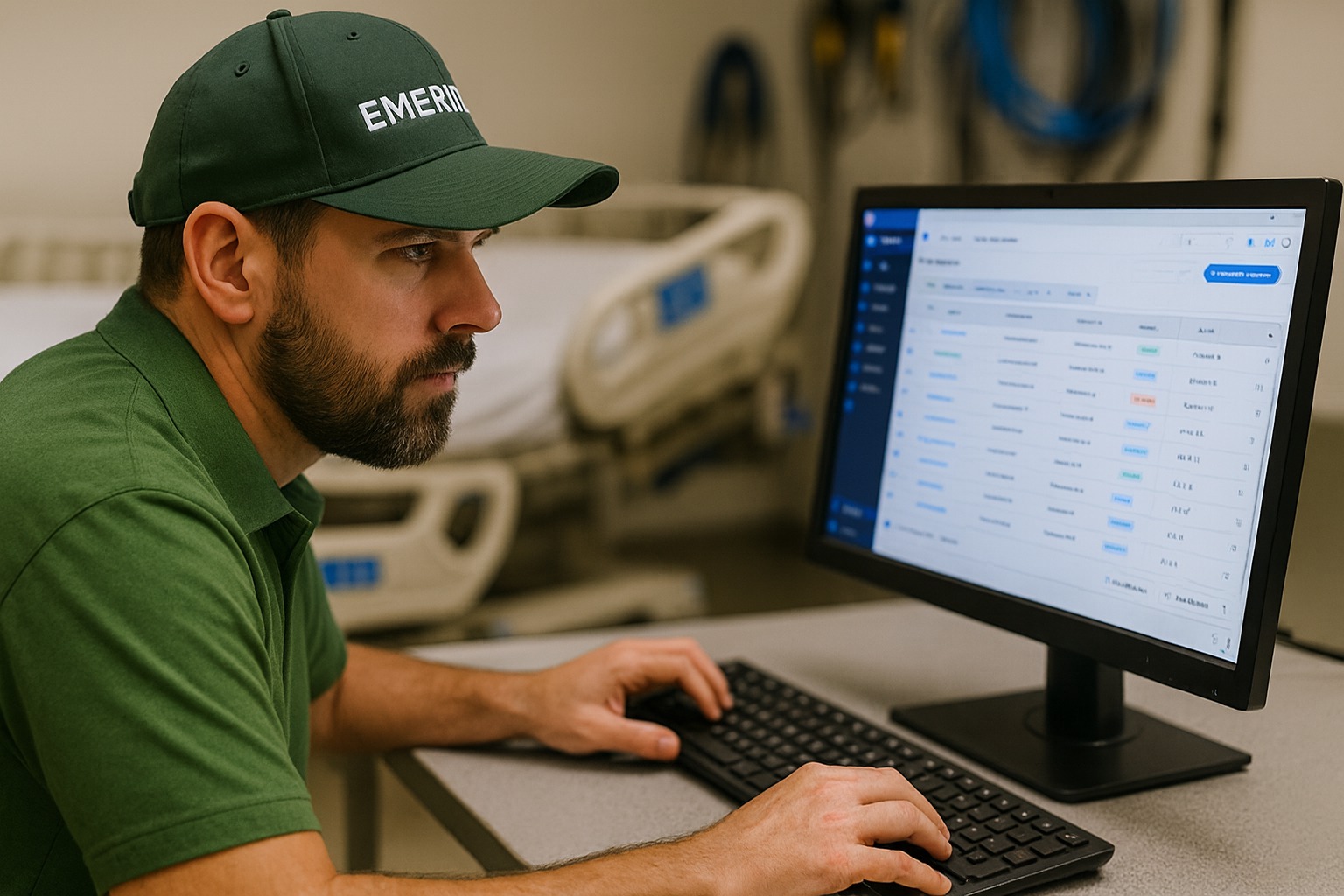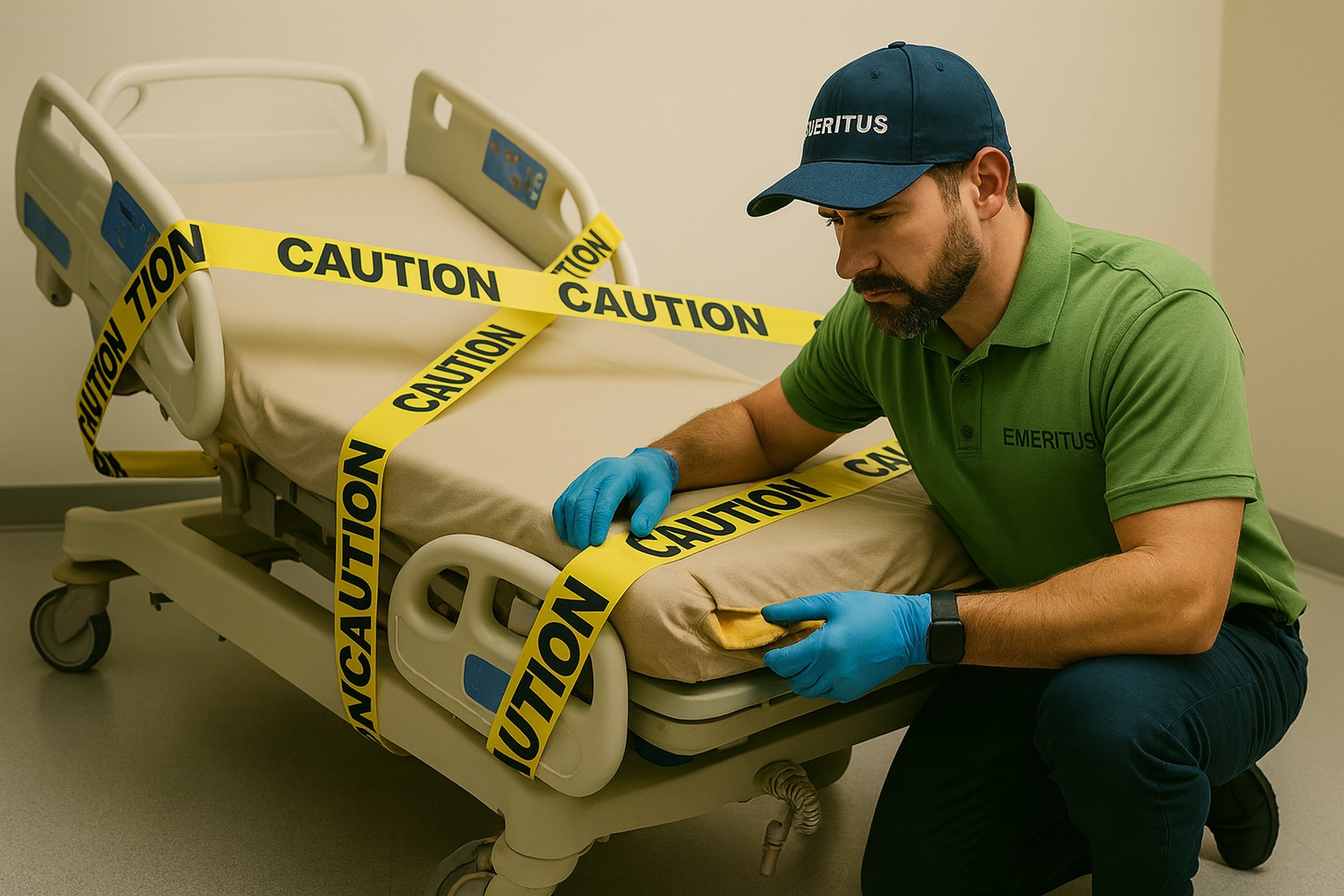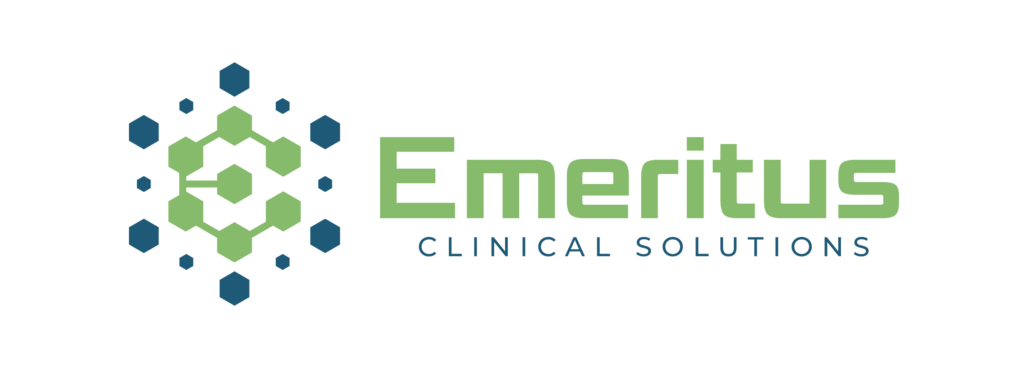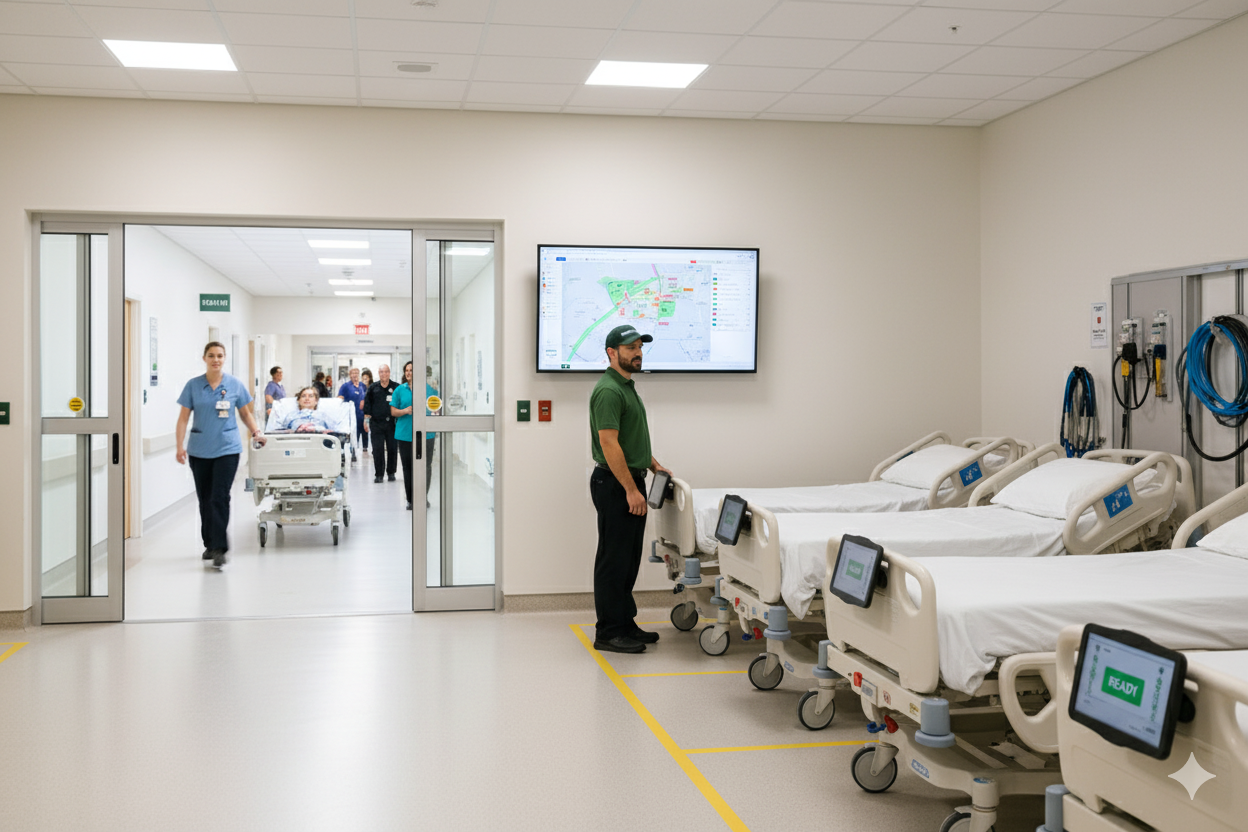
In the healthcare industry, managing hospital beds and stretchers efficiently is critical for smooth operations and patient care. Many facilities face challenges in controlling costs, keeping track of assets, and ensuring timely maintenance. Emeritus addresses these issues head-on through our Quarterly Business Review (QBR) process, which is a key component of our Bed Maintenance 2.0 program. Here’s how our QBRs tackle three core problems: financial transparency, asset tracking, and proactive maintenance.
1. Lack of Financial Transparency in Bed Maintenance Spending
Many healthcare facilities struggle to keep track of the money spent on maintaining and repairing hospital beds and stretchers. Without detailed visibility into these costs, facilities managers often find themselves in the dark, leading to overspending and ineffective budget management.
At Emeritus, our QBRs bring transparency to bed maintenance by providing a comprehensive breakdown of costs. We ensure our clients know exactly where their money is going, from repairs to routine maintenance. With this information, procurement officers and purchasing departments can:
- Monitor spending patterns, ensuring no hidden costs.
- Forecast future expenses, helping allocate budgets more effectively.
- Control costs by tracking exactly what is spent on bed and stretcher maintenance each quarter.
Our QBRs empower clients to make more informed financial decisions, putting them in control of their hospital bed maintenance expenditures.
2. Inadequate Asset Tracking for Hospital Beds and Stretchers
Tracking the total inventory of hospital beds and stretchers is another challenge healthcare facilities face. Without accurate data, it’s easy to lose track of assets, leading to underutilization, redundant purchases, and operational inefficiencies.
Through Bed Maintenance 2.0, our QBRs provide:
- A detailed asset inventory of every hospital bed and stretcher, ensuring no equipment is overlooked.
- Insights into asset performance and condition, helping facilities prioritize which beds need maintenance or replacement.
- Average age tracking, so clients can plan for future replacements and avoid unexpected breakdowns.
This ensures healthcare facilities have full visibility into their most critical assets, helping them optimize usage and ensure patient care isn’t disrupted by faulty equipment.
3. Reactive Instead of Proactive Bed Maintenance
In many healthcare facilities, maintenance only happens after equipment fails, which leads to longer downtime and higher repair costs. Operating in this reactive maintenance model is inefficient and costly.
Emeritus helps facilities shift from reactive to proactive maintenance through our QBRs. By closely monitoring the condition of hospital beds and stretchers, we can:
- Schedule preventive maintenance before major issues arise.
- Minimize downtime by identifying beds that are prone to breakdowns and intervening early.
- Extend the lifespan of hospital beds and stretchers, reducing the need for frequent replacements.
By leveraging data and insights from our QBRs, Emeritus clients benefit from fewer equipment failures, lower costs, and longer-lasting assets.
At Emeritus, we take a proactive, data-driven approach to hospital bed and stretcher maintenance, ensuring our clients can optimize their operations while reducing costs. Our Quarterly Business Review process is central to helping healthcare facilities solve these common challenges, empowering them to focus on what matters most—providing quality patient care.
